Abstract
Analysis of the present situation in canine-rabies-infected countries shows that in most cases the levels of activities for controlling the disease in man and in dogs are far too low to prevent human deaths due to rabies and to eliminate the disease in the dog population. This article compares the two major orientations of a rabies control programme, i.e., prevention of the disease in man by intensifying and modernizing post-exposure treatment (strategy A) and canine rabies elimination by controlling the disease in the animal reservoir (strategy B). The operation of both strategies (A + B) together is also analysed. Based on the available data and assumptions for calculations of the costs, the results show that when the strategies are applied independently of each other, the annual cost of strategy B amounts to 25-56% of that of strategy A. When the two strategies are applied together, the actual annual spending related to the implementation of A + B becomes less than that of strategy A alone as from the fifth year following programme initiation. The sensitivity of the results was tested against selected fluctuations in the assumptions. An estimation of the costs of control activities per avoided death, according to the strategy applied, is also given. In countries where resources allocated to rabies control are inadequate in both the health and veterinary sectors, the comparison in costs and effectiveness of the two programme strategies for rabies elimination strongly suggests that consideration should be given to a national programme of dog rabies elimination. On the other hand, for obvious ethical reasons, if attention is paid to improvement of post-exposure treatment, then the national authorities should consider a planning horizon close to 15 years.
Full text
PDF
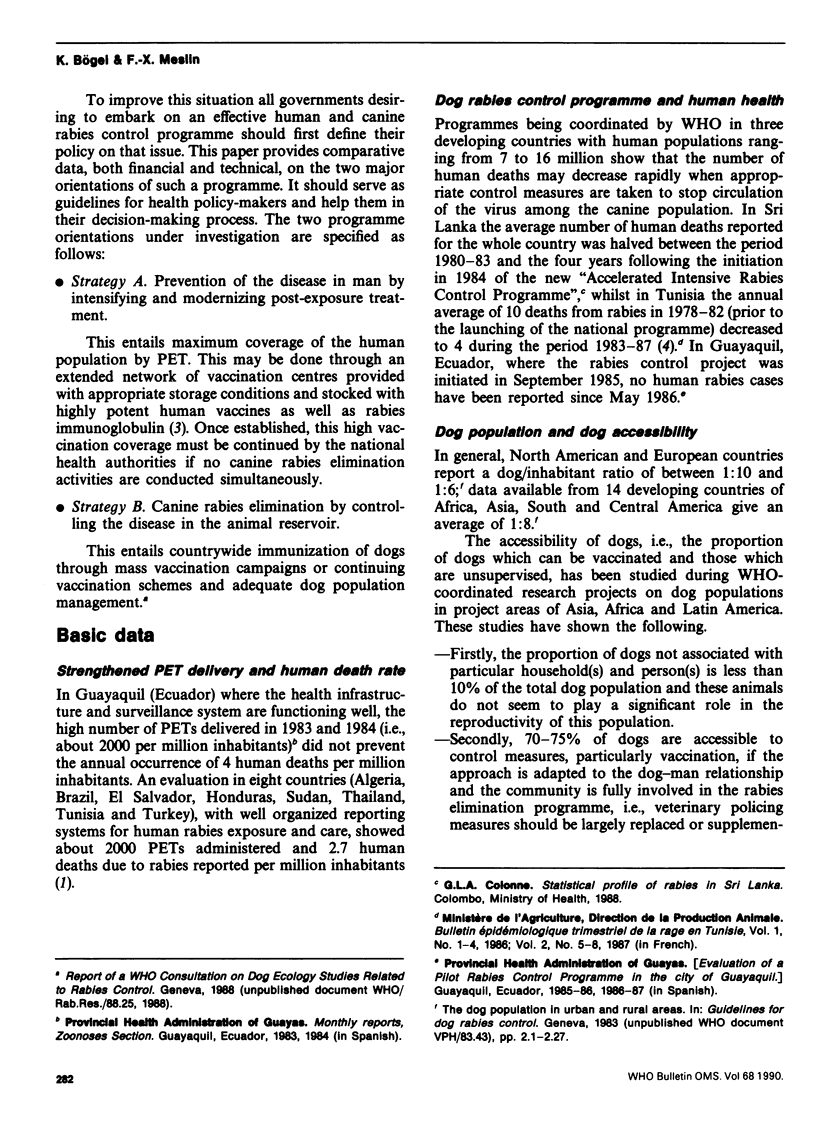
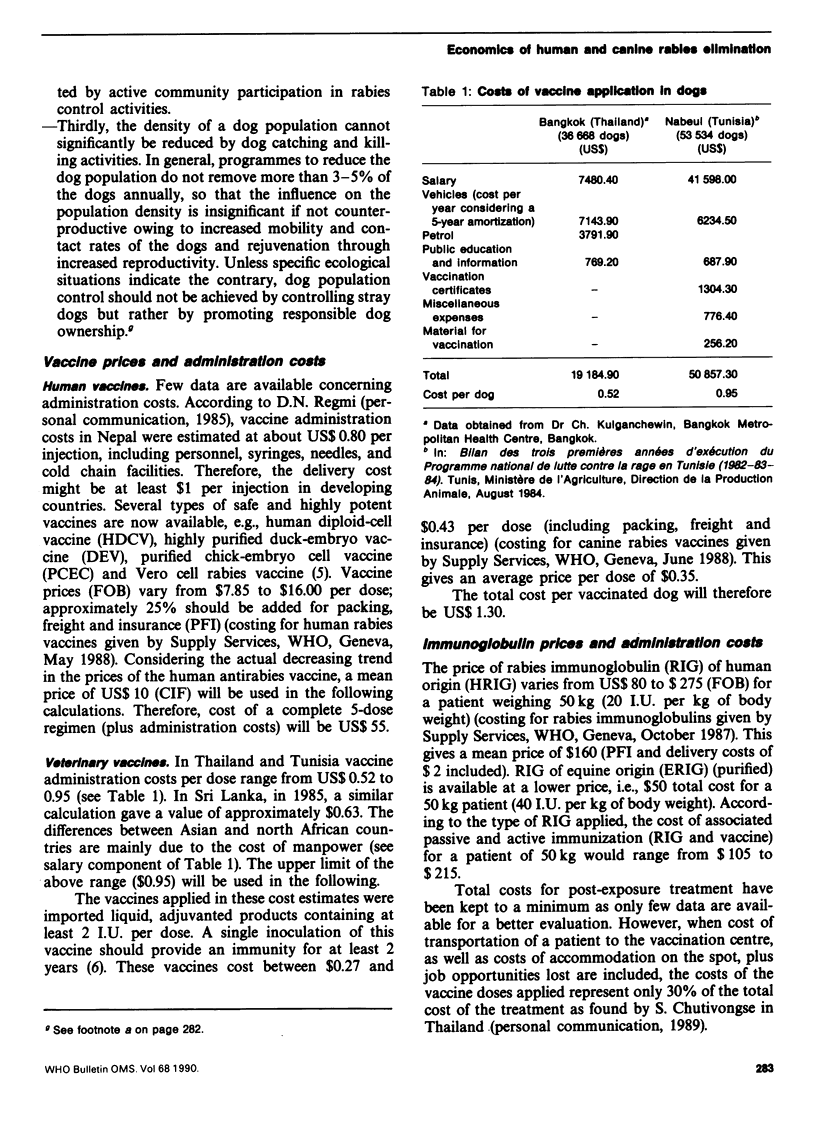
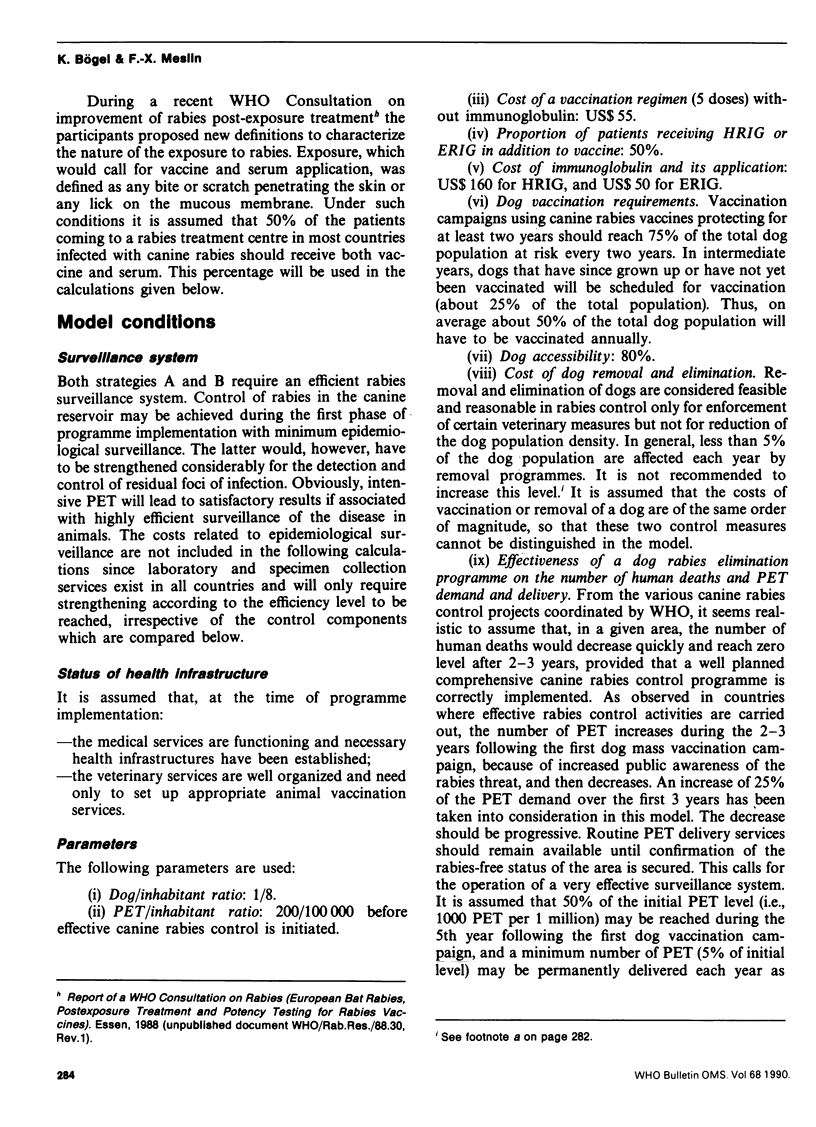

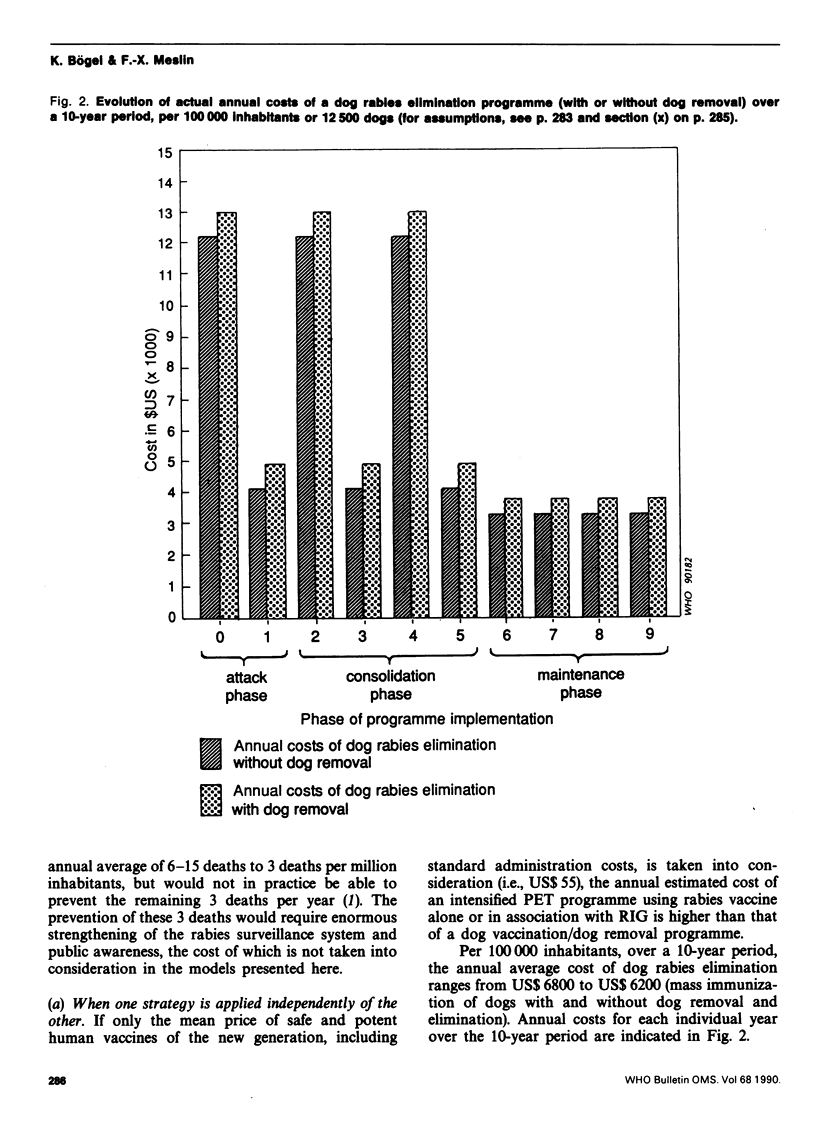
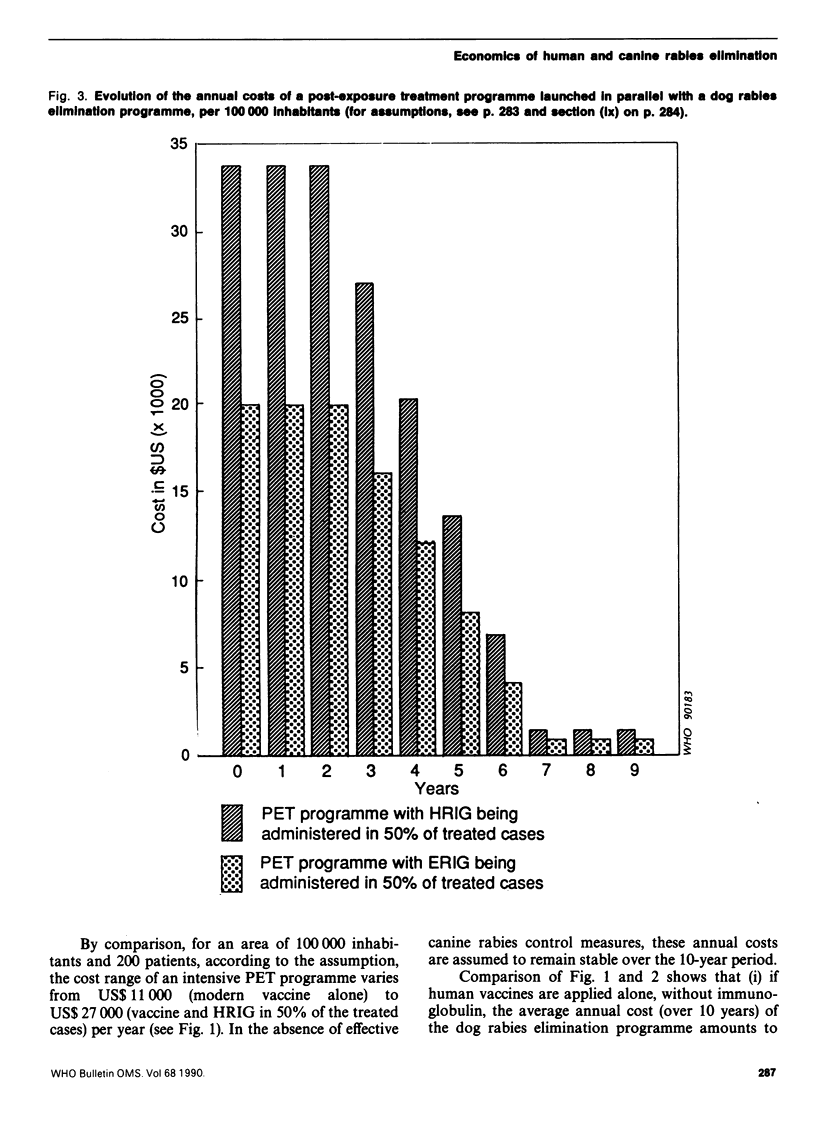
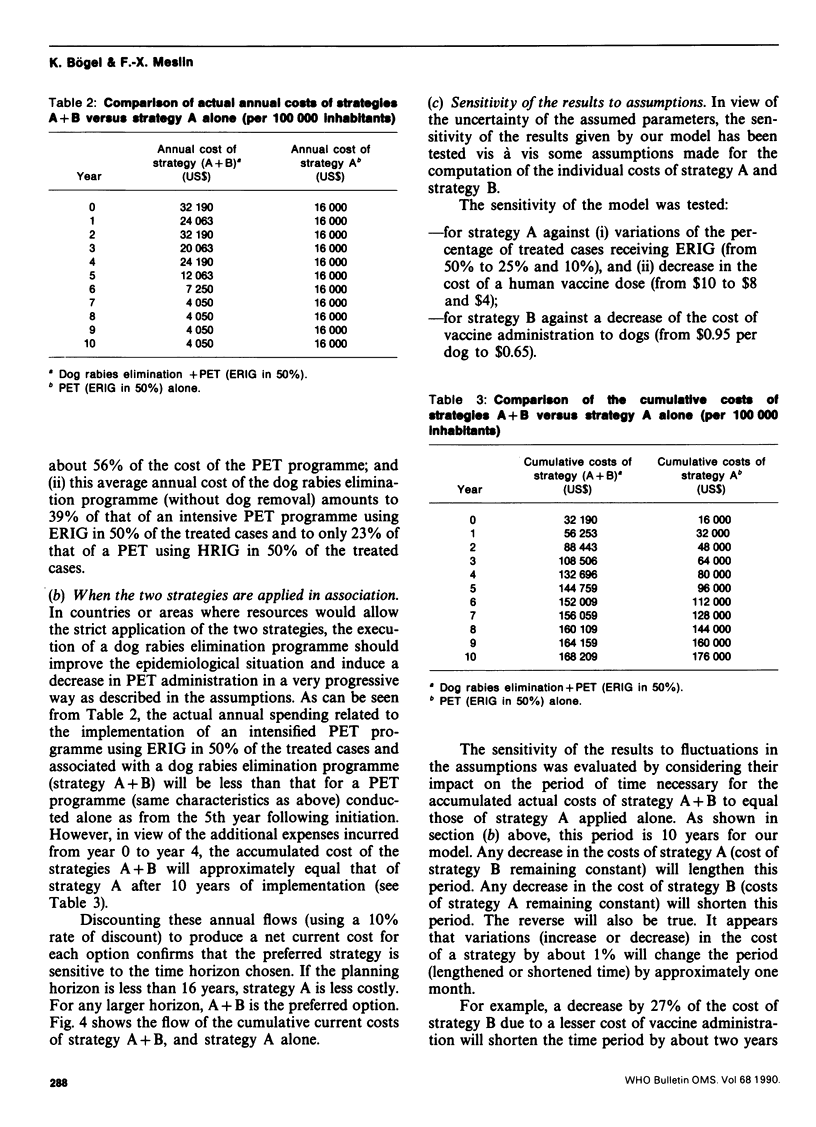
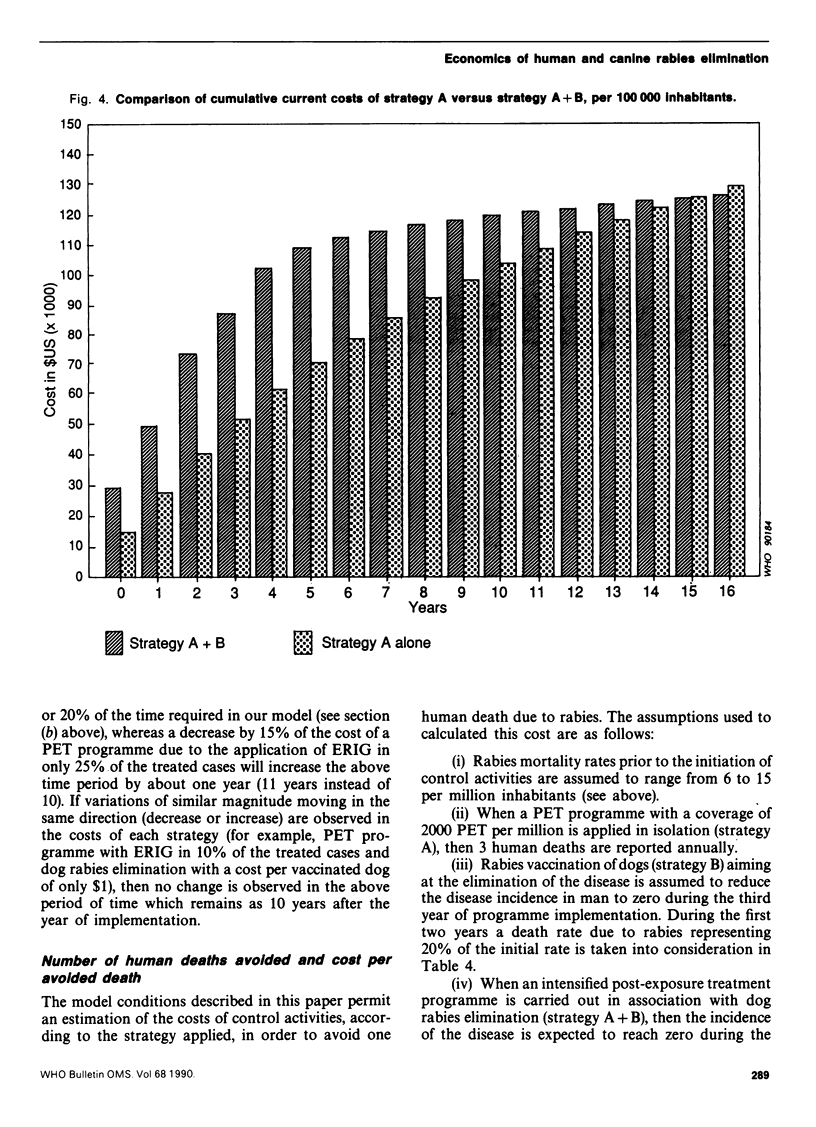
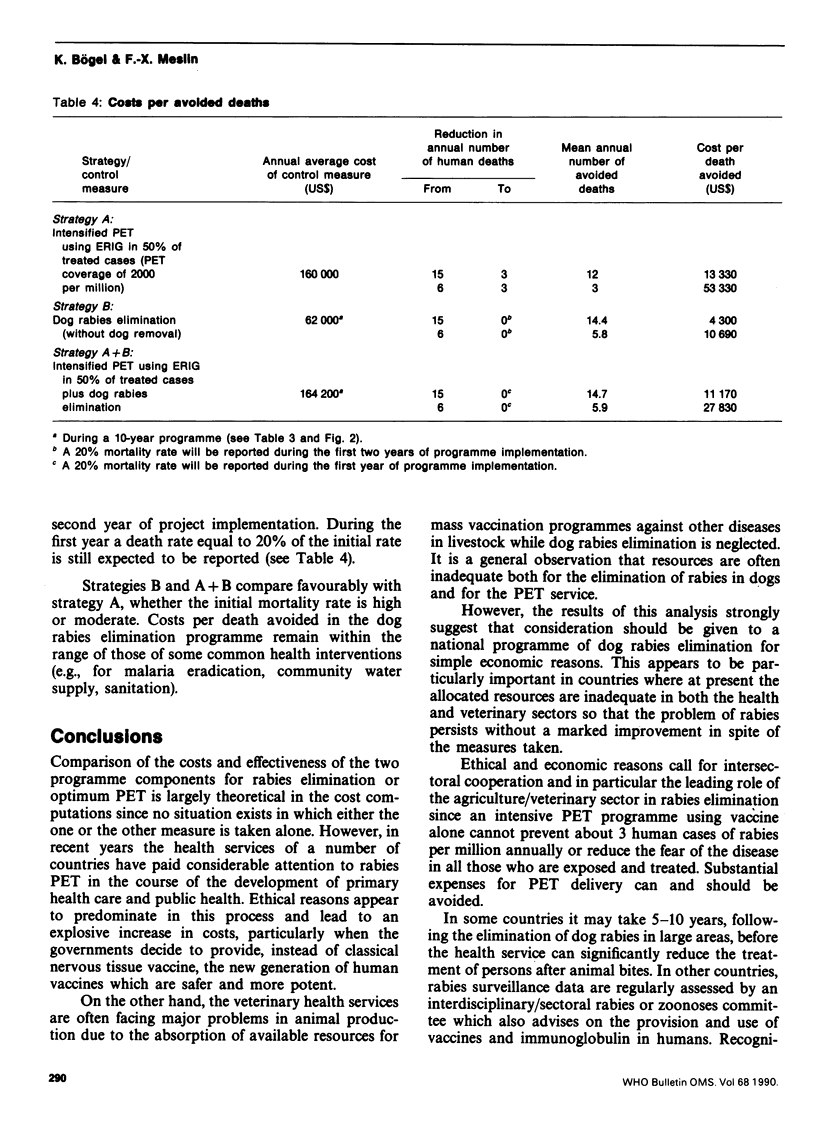
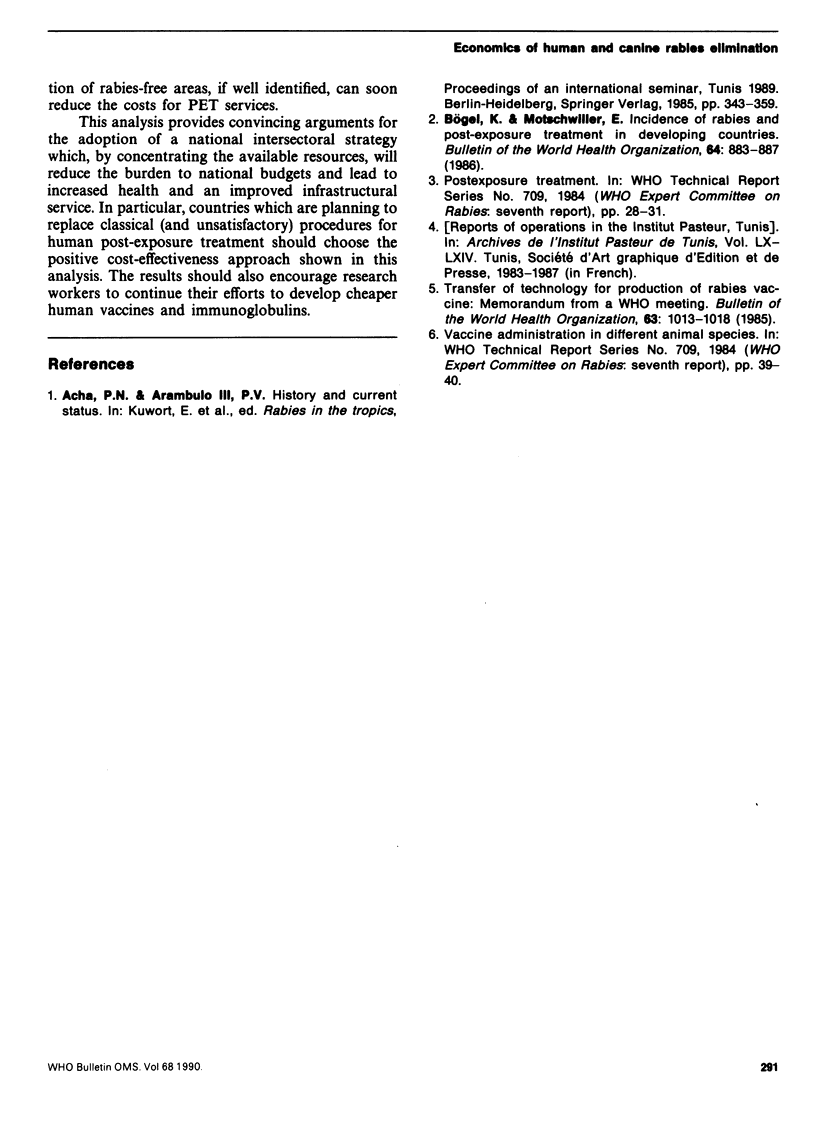
Selected References
These references are in PubMed. This may not be the complete list of references from this article.
- Bögel K., Motschwiller E. Incidence of rabies and post-exposure treatment in developing countries. Bull World Health Organ. 1986;64(6):883–887. [PMC free article] [PubMed] [Google Scholar]


